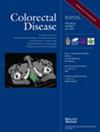Oncological and functional outcomes after sacrectomy for colorectal cancer: A systematic review
Abstract
Aim
Worldwide, of all cancers, colorectal cancer has the fourth highest rate of mortality. Curative treatment for locally advanced or recurrent rectal cancer can require extended resections with sacrectomy, but this sugery can have major consequences for patients. The aim of this study was to investigate the oncological and functional outcomes after sacrectomy in patients with colorectal cancer.
Method
The protocol was registered in (PROSPERO), the international prospective register of systematic reviews. PubMed, Embase, The Cochrane Library, Scopus and Google Scholar were searched using a predetermined search strategy. Article selection, quality of evidence [Grading of Recommendation, Assessment, Development and Evaluation (GRADE)] and risk of bias [The Risk Of Bias In Non-randomized Studies—of Interventions (ROBINS-I)] were assessed by two independent reviewers. Studies reporting on sacrectomy for colorectal cancer were included. Oncological and functional outcomes after sacrectomy for colorectal cancer were the primary outcomes.
Results
Forty-six articles with 1687 patients (1115 men; 506 women) were included. Median follow-up was 31.4 months. Mean 30-day mortality was 1.1%. After R0 resection, overall survival was achieved in 86.2%, 68.0% and 42.1% patients, and disease-free survival was achieved in 75.0%, 51.0% and 43.0% patients, respectively, after 1, 3 and 5 years. Survival rates were lower after R1 or R2 resection. Most patients reported elimination of or significantly reduced pain after surgery, and 82.2% were able to walk independently, without the use of assistive devices. More patients were dependent on walking-assist devices after high sacrectomy than after low sacrectomy. The most commonly reported bowel dysfunctions were bowel obstruction (22.3%) and fistula (4.6%). Bladder dysfunction was mainly reported as incontinence (8.3%) and neurogenic bladder (23.3%). No study included quality of life as an outcome.
Conclusions
The mortality was limited, and the morbidity rates were in concordance with published literature. The results suggest that R0 resection has higher survival rates than R1/R2 resections. Both short- and long-term functional outcomes could have major impact on a patient's quality of life. Heterogeneity was high, and neither comparative analyses nor meta-analysis could be performed.

 求助内容:
求助内容: 应助结果提醒方式:
应助结果提醒方式:


